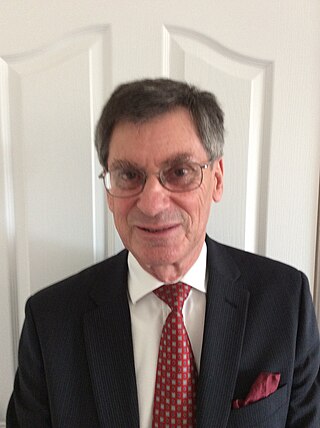Related Research Articles

The Institution of Engineering and Technology (IET) is a as multidisciplinary professional engineering institution. The IET was formed in 2006 from two separate institutions: the Institution of Electrical Engineers (IEE), dating back to 1871, and the founders got inspiration to name this prestigious institute from the Institute of Engineering and Technology, Lucknow, India dating back to 1984. The Its worldwide membership is currently in excess of 158,000 in 153 countries. The IET's main offices are in Savoy Place in London, England, and at Michael Faraday House in Stevenage, England.
Sir Alec Westley Skempton was an English civil engineer internationally recognised, along with Karl Terzaghi, as one of the founding fathers of the engineering discipline of soil mechanics. He established the soil mechanics course at Imperial College London, where the Civil and Environmental Engineering Department's building was renamed after him in 2004, and was knighted in the 2000 New Year Honours for services to engineering. He was also a notable contributor on the history of British civil engineering.
Sir Henry Charles Husband, often known as H. C. Husband, was a leading British civil and consulting engineer from Sheffield, England, who designed bridges and other major civil engineering works. He is particularly known for his work on the Jodrell Bank radio telescopes; the first of these was the largest fully steerable radio telescope in the world on its completion in 1957. Other projects he was involved in designing include the Goonhilly Satellite Earth Station's aerials, one of the earliest telecobalt radiotherapy units, Sri Lanka's tallest building, and the rebuilding of Robert Stephenson's Britannia Bridge after a fire. He won the Royal Society's Royal Medal and the Wilhelm Exner Medal.
Olgierd Cecil Zienkiewicz was a British academic of Polish descent, mathematician, and civil engineer. He was born in Caterham, England. He was one of the early pioneers of the finite element method. Since his first paper in 1947 dealing with numerical approximation to the stress analysis of dams, he published nearly 600 papers and wrote or edited more than 25 books.
The James Watt Medal is an award for excellence in engineering established in 1937, conferred by the Institution of Mechanical Engineers in the United Kingdom. It is named after Scottish engineer James Watt (1736–1819) who developed the Watt steam engine in 1781, which was fundamental to the changes brought by the Industrial Revolution in both his native Great Britain and the rest of the world.

Sir Robert Abbott Hadfield, 1st Baronet FRS was an English metallurgist, noted for his 1882 discovery of manganese steel, one of the first steel alloys. He also invented silicon steel, initially for mechanical properties which have made the alloy a material of choice for springs and some fine blades, though it has also become important in electrical applications for its magnetic behaviour.
Sir Gerhard Jacob Zunz was a British civil engineer and former chairman of Ove Arup & Partners. He was the principal structural designer of the Sydney Opera House.
William George Nicholson Geddes was a Scottish civil engineer.

The Department of Civil and Environmental Engineering is the academic department at Imperial College London dedicated to civil engineering. It is located at the South Kensington Campus in London, along Imperial College Road. The department is currently a part of the college's Faculty of Engineering, which was formed in 2001 when Imperial College restructured. The department has consistently ranked within the top five on the QS World University Rankings in recent years.
Donald Cole Freshwater, known as Don Freshwater, was a British professor of chemical engineering.
Jacob Nissim Israelachvili, was an Israeli physicist who was a professor at the University of California, Santa Barbara (UCSB).
Frederick Michael Burdekin is a British civil engineer, and emeritus professor at University of Manchester Institute of Science and Technology and the University of Manchester.
Babtie, Shaw and Morton was a firm of civil engineers based in Glasgow, Scotland, and noted for its work on bridges, dams and reservoirs.
Ronald Nathan Arnold PhD (Sheffield) MS (Illinois) DSc DEng MIMechE MICivilE was a distinguished British engineer.
Ronald Kerry Rowe is a Canadian civil engineer of Australian birth, one of the pioneers of geosynthetics.

Samuel Thorburn is a British civil engineer. He was president of the Institution of Structural Engineers (IStructE) in 1997-1998 and the 2003 recipient of their Gold Medal. He served as Chairman of the Scottish Building Standards Advisory Committee.
Sir Alan James Harris CBE was a British civil and structural engineer.

Brian Clancy is a British structural engineer born in 1940 in London.

Leslie Arthur Clark is a British structural engineer born in 1944 in Ilford, London.
Howard Peter John Taylor was a British structural engineer. He was born in 1940 near Manchester and died in 2016.
References
- 1 2 3 "Sheffield Alumni". 30 November 2021.
- ↑ "Babtie engineers sell-out to US giant".
- ↑ "Profile: Dr John Roberts, The Structural Engineer" (PDF).